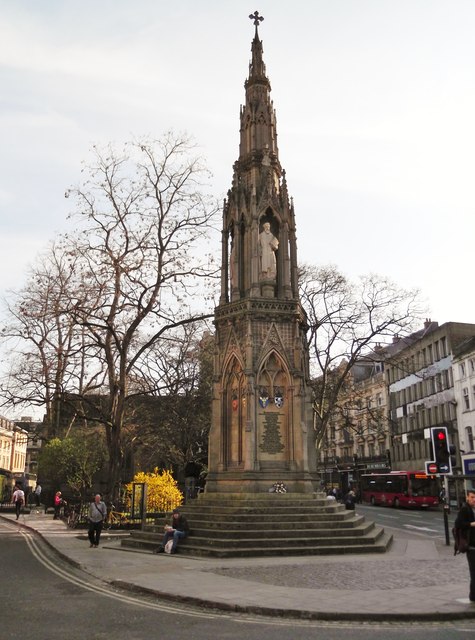During the reign of the Catholic Queen Mary I of England (1553–1558), known as Bloody Mary for her ruthless persecution of Protestants during the period known as Marian Protestantism, almost 300 Protestants were convicted of heresy and executed by being burned alive.[1]
The most prominent of Mary’s victims were Archbishop Thomas Cranmer and Bishops Hugh Latimer and Nicholas Ridley, together known as the Oxford Martyrs.[1][2] Latimer and Ridley were burned at the stake in October 1555;[2] Latimer’s last words are recorded as “Be of good cheer, Ridley; and play the man. We shall this day, by God’s grace, light up such a candle in England, as, I trust, will never be put out”.[3]
Cranmer on the other hand renounced his Protestant faith and returned to Catholicism, before then renouncing his recantation and in turn being executed in March 1556.[2]

Wikimedia Commons
The martyrs were burned outside the city of Oxford’s North Gate, a spot marked by a cross in the road on Broad Street,[2] where workmen in the 19th century discovered the stump of a stake and pieces of charred bone under the walls of Balliol College.[4]
The Martyrs’ Memorial, designed by Sir George Gilbert Scott, was completed at the south end of St Giles in 1843.[2]
The nursery rhyme “Mary, Mary, Quite ContraryEnglish nursery rhyme that may be about Queen Mary I.” may be a reference to this episode in English history.[5]
See also
- Burning of Women in EnglandBurning was a legal punishment imposed on women found guilty of high treason, petty treason or heresy. Over a period of several centuries, female convicts were publicly burnt at the stake, sometimes alive, for a range of activities including coining and mariticide.

